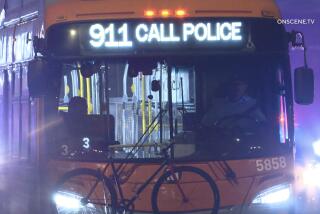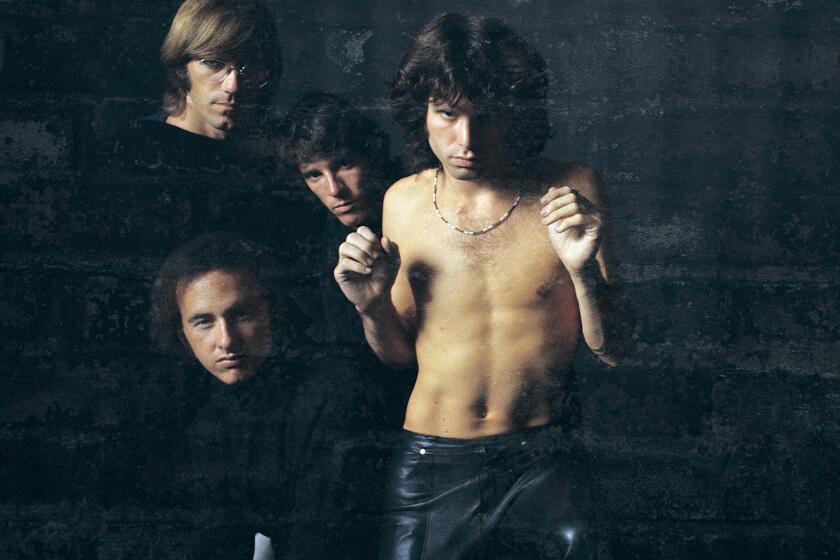BART strike: Commuters flock to ferries, buses, bridges
SAN FRANCISCO -- Day 4 of the regional commuter rail strike began for many in pre-dawn darkness Monday, as several hundred thousand residents who rely on Bay Area Rapid Transit trains instead poured onto buses and ferries or inched their way across gridlocked bridges.
The mood was a mix of resignation and frustration as residents adapted.
Free BART round-trip shuttles running from many East Bay stations were filled ahead of schedule: Of the nine stations that began running buses at 5 a.m., only Hayward and Lafayette still had availability by 7:35 a.m.
Still, buses from the Alameda-Contra Costa Transit district -- which is in the midst of its own labor discord -- picked up the slack, loading thousands of additional passengers for standing-room only express trips to San Francisco.
And those fortunate enough to be able to get to Oakland’s Jack London Square were greeted with long ferry lines that moved remarkably fast, thanks to extra vessels placed into service on San Francisco Bay Ferry routes by Golden Gate Ferry, its northern neighbor.
Kim Walker, 56, of Oakland, is a nurse at a public school-based health center in San Francisco’s Potrero Hill neighborhood, so like many she cannot telecommute. She often has to visit other sites during the day, so she generally drives. But an attempt at taking others along with her Friday in a casual carpool simply took too long.
Monday, she rose early, hopped on her bike and was in the ferry line by 8 a.m. reading a book.
“It’s really a nice wonderful way to commute, on the bike and on the water,” Walker said. “It just takes a long time.”
Walker had stopped for a juice on her way in and heard of much graver travails -- a man who lives in Contra Costa County’s Brentwood and spent four hours in traffic Friday getting into San Francisco.
Walker’s relative good mood was not unusual Monday.
“I’m lucky I get to take the ferry,” said Andy Visser, who works a software job in San Francisco’s Jackson Square, lives in Oakland and also was commuting by bike and ferry. Then he amended: “It’s cool now. I think I’ll be really sick of it in a couple of days.”
The boats make for a luxurious ride to San Francisco’s iconic Ferry Building -- with coffee, beer, wine and a full snack bar on board -- though they are costlier than BART.
“There’s no bar on BART,” Matthew Meidinger, 33, of Berkeley, said with a mix of cheer and sarcasm as he prepared to disembark Monday.
Meidinger, a restaurant manager, said he had walked right onto the ferry and grabbed a seat only 15 minutes or so after arriving at the Jack London Square terminal -- a big improvement over the delays during BART’s 4½-day strike in July, he said.
Still, he was irritated.
“The whole thing’s a pain,” he said, noting that it is his son’s first birthday and rather than popping into the city for a few brief meetings the transit issues would cost him the day.
His take on the workers: “A bunch of people who already make $70-$80 grand a year are just nitpicking and putting half a million people out.”
BART carries 400,000 riders a day and negotiations between management and its two largest unions -- Service Employees International Union Local 1021 and Amalgamated Transit Union Local 1555 -- have dragged on since spring.
Federal mediators flew to Oakland last week to press for resolution and by all accounts brought the sides much closer together. But negotiations crumbled Thursday afternoon.
The unions had agreed on pension and healthcare contributions and came very close on salary agreement. But so-called “work rules” -- involving the amount of input workers have over changes in procedure -- gummed up the deal, as did safety concerns over tunnel lighting, track clearing and track signage, among other issues.
In a blow to all parties, two workers -- one a BART manager with another union who had crossed the picket line and another a contractor -- were killed Saturday while inspecting a dip in the tracks between Walnut Creek and Pleasant Hill. They were hit by an out-of-service train.
A limited number of managers are being trained to offer skeletal service in the event of a prolonged strike. However, BART officials have not commented on local reports that it was serving as a training run.
The National Transportation Safety Board is investigating.
Chris Finn, a striking train operator with 17 years experience, said that radio communications Saturday revealed that a controller at BART headquarters warned the train operator of people on or near the track -- as is customary.
The operator is then supposed to sound an air horn to alert the workers to the coming train and make visual contact with them, Finn said. It remains unclear whether the horn was sounded, and, if it was, why the workers were unable to safely get off the tracks.
There were six people aboard the train that killed the workers. Finn said operators are usually alone in the cab, monitoring the radio and watching the tracks -- unless there is a training exercise.
“When we train people, we take out a group doing a class, and one person will get a little seat time for a while and then we give another person the opportunity to get seat time,” Finn said.
It is unclear who was in the operator’s seat at the time of the collision and how much experience that person had. Striking BART operators said they recognized the voice of a manager who has not operated trains for more than a decade, but it was not known exactly what he was doing at the time of the accident.
BART operators also said that it can take half a mile to stop a train traveling at high speech and noted there is a curve in the track near the spot the workers were killed.
There was no movement on talks by mid-morning Monday but the BART board of directors planned a 3 p.m. closed session to discuss the labor impasse and said in a statement that they hoped both sides would agree to re-enter mediation.
Meanwhile, SEIU Local 1021 late Sunday issued a statement saying the unions were willing to concede on “work rules” relating to the implementation of new technology -- but not on safety.
At a picket line near San Francisco’s Embarcadero BART station Monday morning, ATU Local 1555 workers agreed.
“In just two days of us being on strike, you’ve got two employees deceased,” said Matt Perricone, a nine-year BART employee who formerly operated trains and now works communications at the control center. “That’s not a good ratio.”
Shop steward Tina Sanchez-Santillan, a train operator and nearly 10-year employee, said the tragedy shows that safety issues “are not just a smoke screen,” as BART management had alleged earlier in negotiations.
“We know who our passengers are,” she added. “I take them to work every morning at 4 a.m. We don’t want to inconvenience them. But we feel that the anger needs to be targeted higher up the management hierarchy.”
Not all commuters agreed. Tweeted Destin Legarie: “Maybe they should focus on not striking so it doesn’t happen again.”
ALSO:
West. L.A. high-rise fire causes millions of dollars in damage
Cee Lo Green expected to face drug charge but not sex assault
Patient at Northern California hospital shot dead by sheriff’s deputy
Twitter @leeromney
[email protected]
More to Read
Sign up for Essential California
The most important California stories and recommendations in your inbox every morning.
You may occasionally receive promotional content from the Los Angeles Times.












